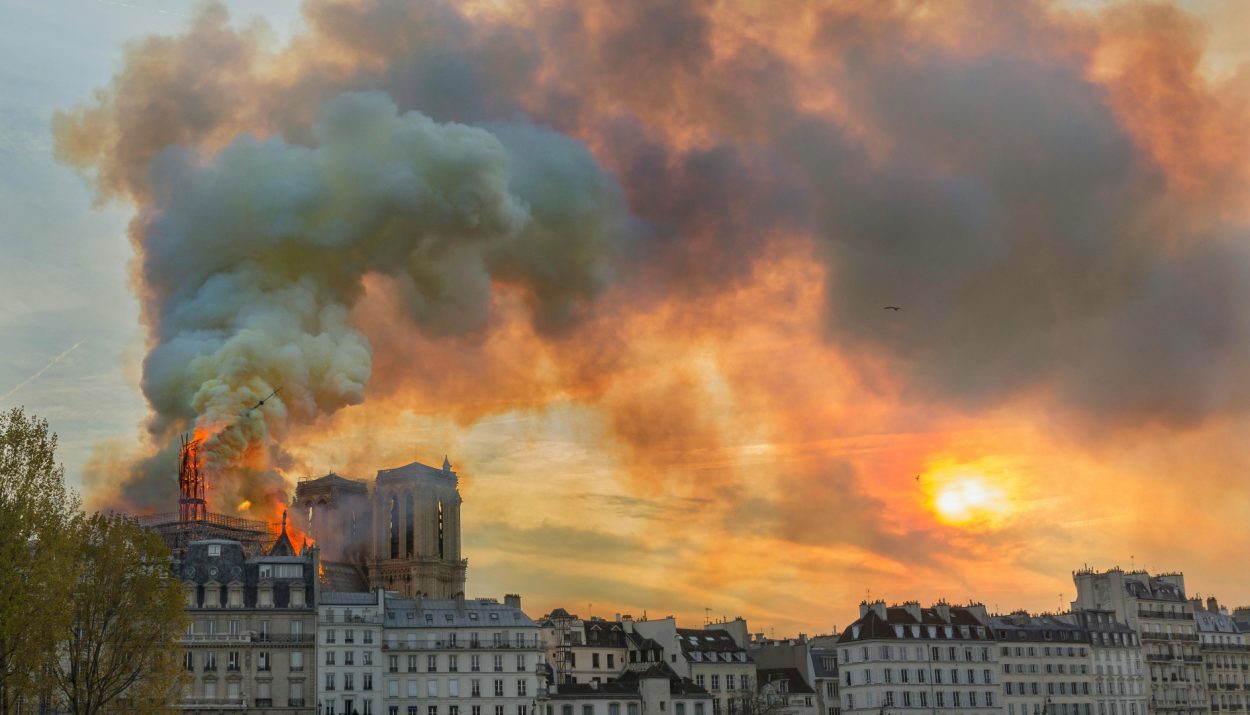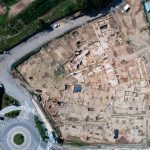On April 15, 2019, breaking news alerts rang out worldwide about a devastating fire sweeping through Notre-Dame de Paris, a medieval Catholic cathedral and one of the most recognizable landmarks in Europe. Footage of the flames of the tragic fire lit up social media and major news outlets.
Construction on Notre-Dame Cathedral began in 1163, meaning that the important structure has had more than 850 years to amass numerous secrets, oddities, and enigmatic features. The accidental fire not only destroyed parts of the massive structure, but it helped to expose some of the long-held secrets of the famous gothic cathedral.
The Fire
Fire broke out in the famous Notre-Dame Cathedral in Paris on April 15, 2019, and caused significant damage to the medieval landmark. The fire was accidentally ignited during restoration work on the building and quickly spread from the attic to the roof.
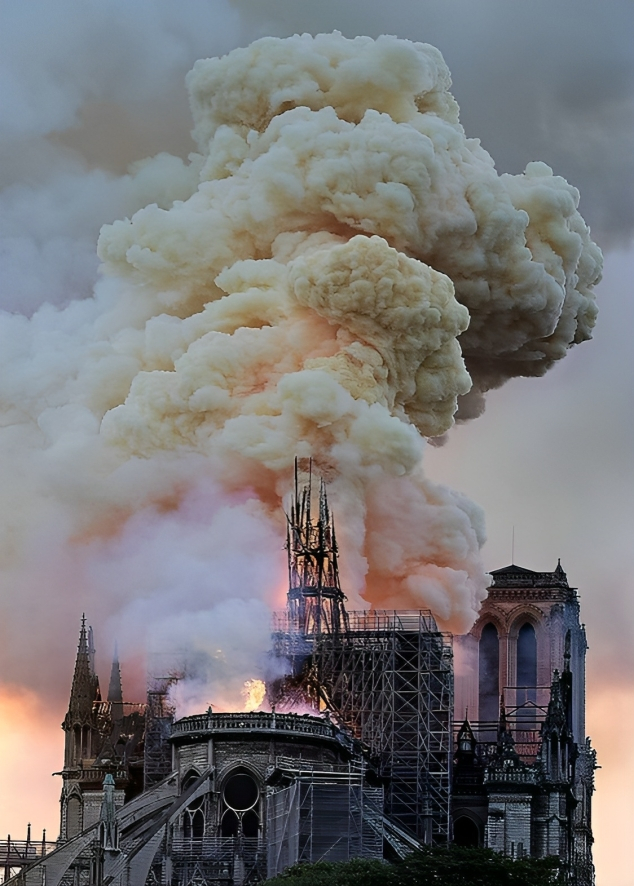
As flames shot from the roof of the beloved cathedral, crowds of onlookers gathered along the banks of the Seine River to watch the tragic events unfold. Soon, fire engulfed the iconic spire. Eyewitnesses gasped in horror as the spire collapsed amid the flames.
The Tragic Event Forced a Discussion of Fire Safety for Historic Buildings
Thanks to the heroic efforts of hundreds of firefighters, Notre-Dame Cathedral was not completely destroyed. But fighting the blaze was a challenge for firefighters. When the structure was built more than eight centuries ago, safety standards were much different … if they existed at all.
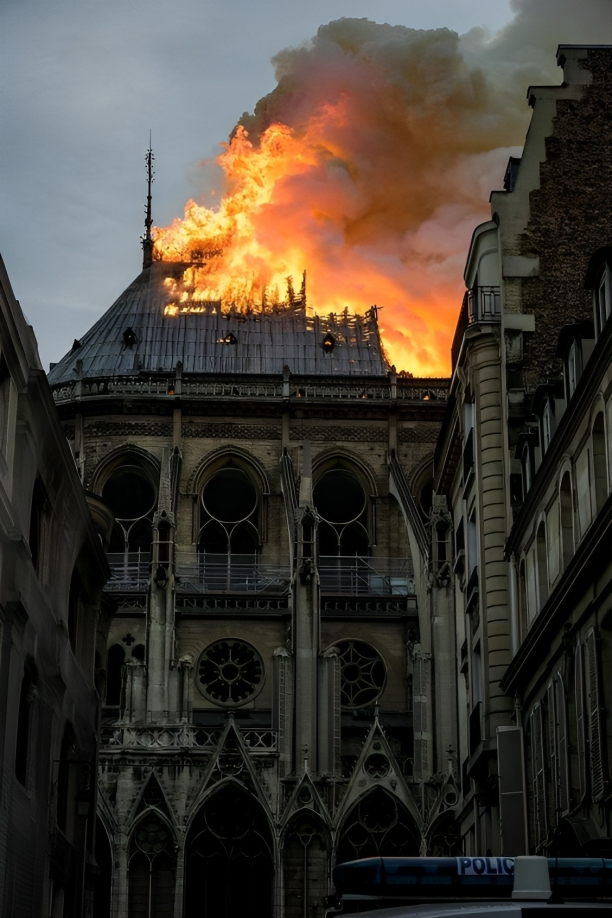
While most people agree that buildings as historically and architecturally significant at Notre-Dame Cathedral should be preserved and maintained as close to its original appearance as possible, there is also the need to implement safety features.
Vowing to Rebuild
France’s president, Emmanuel Macron, vowed to rebuild and restore its national treasure after the devastating fire. Support poured in from around the world as individuals and groups donated to the restoration efforts.

The restoration of Notre-Dame Cathedral is expected to take a long time. It is a complex process that involves employing skilled craftsmen to replicate the centuries-old details while also using modern innovations to ensure that the building meets current safety codes.
Building Notre-Dame Cathedral
Before we go further into the challenges firefighters faced while battling the blaze at Notre-Dame Cathedral and how the fire exposed some of the building’s ancient secrets, let’s look at when and why the massive church was built in the first place.
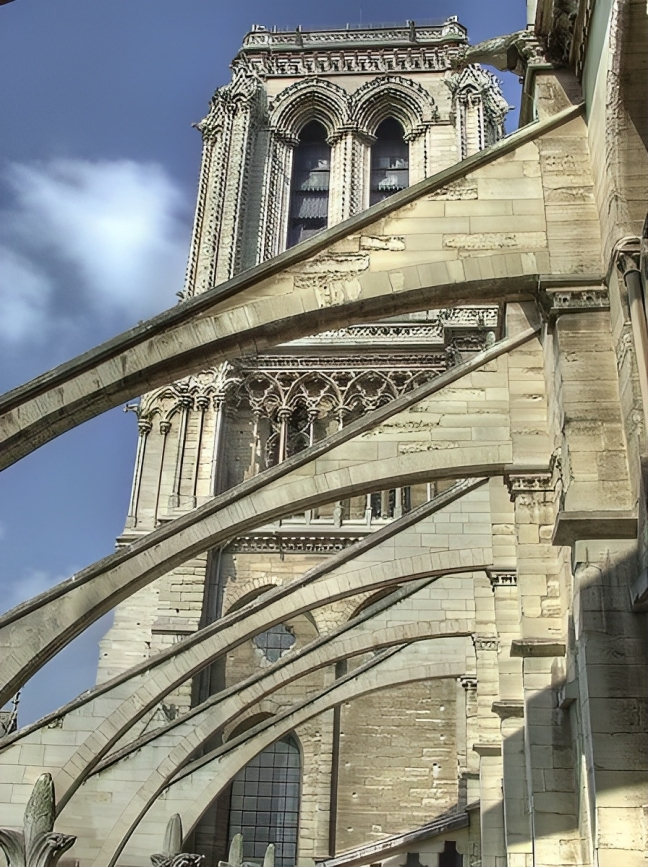
Construction on the cathedral, which is officially known as Notre-Dame de Paris, began in 1163 during King Louis VII’s time on the throne and took several centuries to complete. Although the cathedral has always been a work in progress, it was largely completed by 1345.
Honoring the Virgin Mary
As the name suggests, Notre-Dame was erected to honor the Virgin Mary. It was built during a time in medieval history when many of the grand cathedrals of Europe were constructed. Both King Louis VII and Pope Alexander III were on hand when the cornerstone of the cathedral was laid.
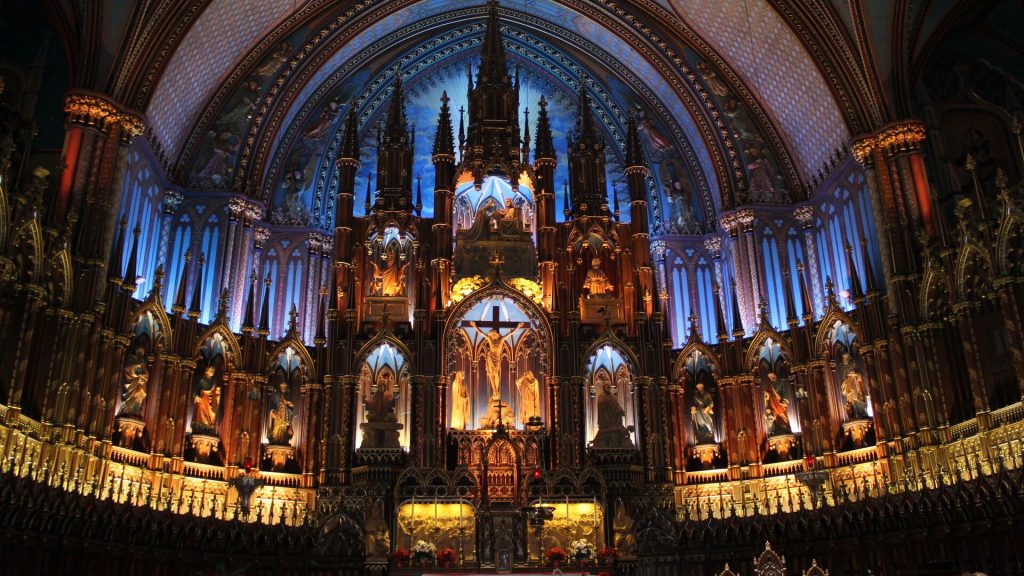
At that time, it was a point of pride and a symbol of devotion for a city to have a grand cathedral. King Louis VII wanted the cathedral in Paris to showcase the wealth and architectural achievement of the city, to be a fitting tribute to the Virgin Mary, and to house important Christian relics, as we will see momentarily.
Notre-Dame Was Built Atop Several Older Places of Worship
Long before France was converted to Christianity, a Roman temple once stood at the site where Notre-Dame Cathedral now stands. This temple was devoted to the Roman god, Jupiter. On March 6, 1710, construction workers discovered the Pillar of the Boatmen beneath the cathedral.
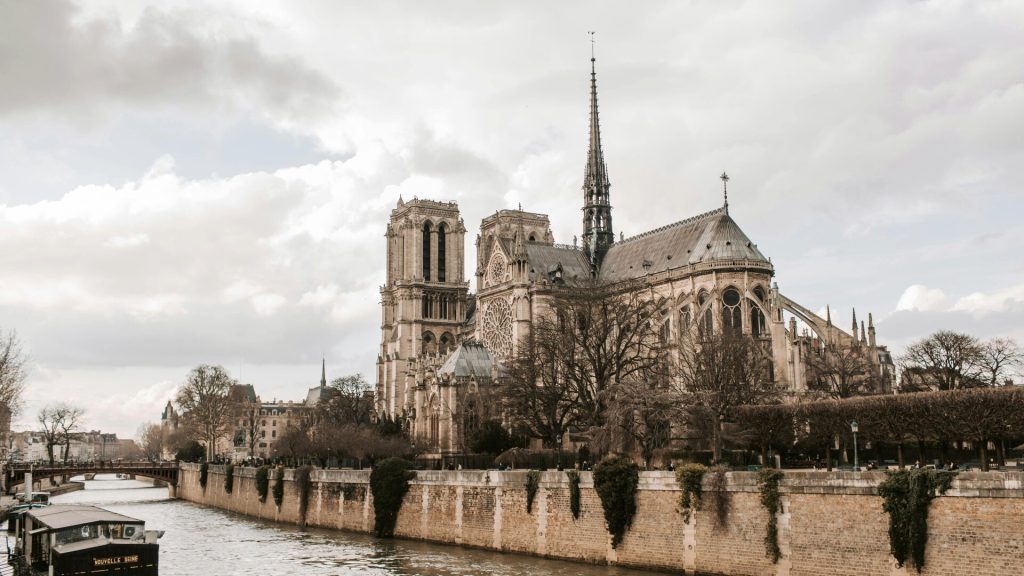
Dating back to the 1st century, the Pillar of the Boatmen is the oldest monument in Paris and is evidence that a Roman temple once existed at this location. A Christian Romanesque church, the Cathedral of Saint Etienne, was erected over the temple in 528. It stood until work began on Notre-Dame Cathedral.
Built in the Gothic Style
It was Maurice de Sully, the Bishop of Paris, who suggested that the new cathedral be designed in the gothic style, which was popular in the late Middle Ages. This style evolved from the older Romanesque architectural style and was called “Gothic” because Renaissance folks thought it looked “barbaric.”

Notre-Dame includes many of the classic Gothic features, including pointed arches, ribbed ceiling vaults, slender columns, and stained-glass windows. And, of course, flying buttresses. The Flying buttresses of Notre-Dame Cathedral have become one of its defining features.
About those Flying Buttresses
One of the most recognizable elements of Notre-Dame Cathedral is its flying buttresses. This architectural feature, common in Gothic cathedrals, is both beautiful and functional. The exterior arches or braces give the buildings a skeletal look, but they also serve an important purpose.
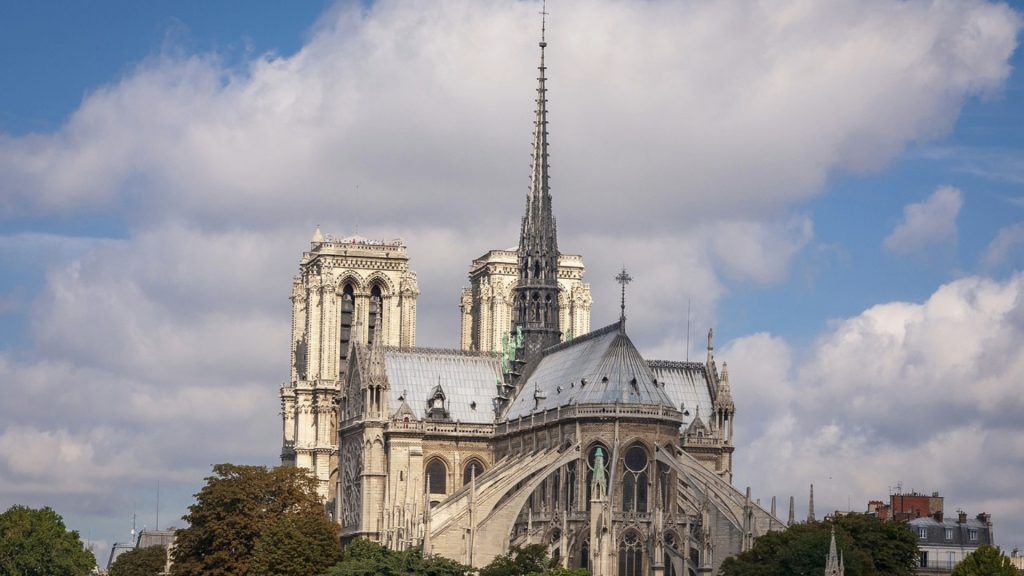
The braces transfer the weight of the vaulted roofs away from the main sidewalls and onto vertical buttresses in the form of solid, brick piers. Flying buttresses were a crucial innovation of the day. Without them cathedrals could not be as tall without the risk of the walls bowing out.
The Cultural and Historical Significance of Notre-Dame Cathedral
Notre-Dame de Paris served an important role in the history of Paris and witnessed numerous historical events. In 1804, Napoleon Bonaparte’s coronation was held at the cathedral. The “Mays” of Notre-Dame are a collection of priceless paintings that were given as gifts to the cathedral in the 17th and 18th centuries.
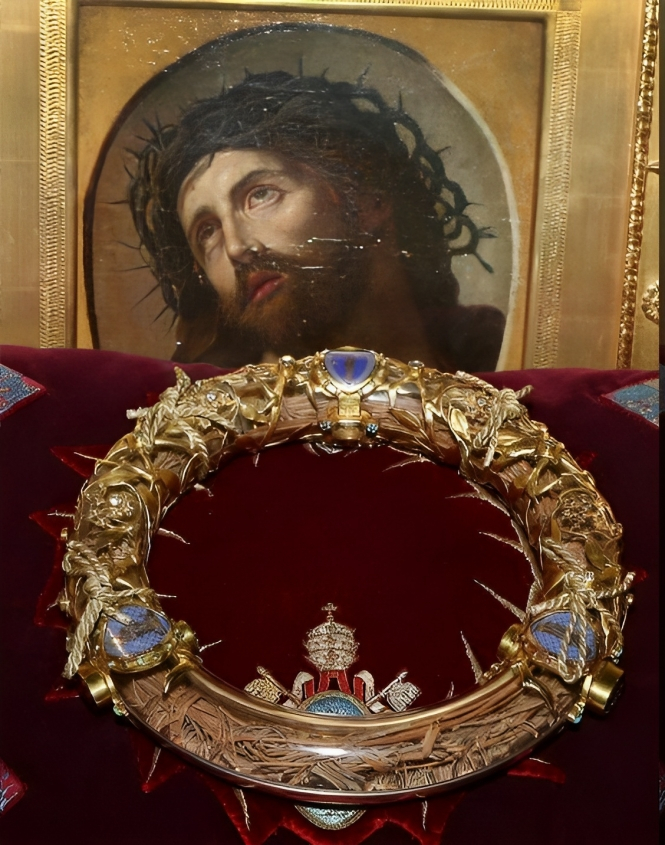
The Crown of Thorns, what is believed to be the actual crown placed on the head of Jesus just prior to his crucifixion, is one of Notre-Dame’s most treasured religious relics. It is housed in the cathedral’s treasury. Fortunately, thanks to quick action, both the paintings and the Crown of Thorns escaped damage in the 2019 fire.
Notre-Dame’s Towers Are Not Twins
From a distance, it looks like the two towers of Notre-Dame Cathedral are twins. But the two towers, which stand watch over the west entrance, are noticeably different than you might think. The reason for this is simple.
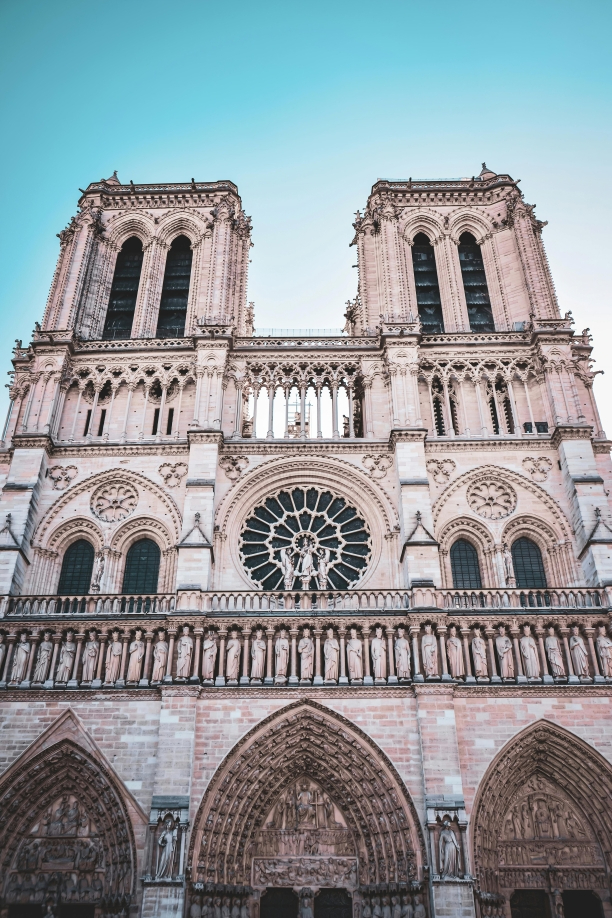
Construction work on Notre-Dame de Paris took more than two centuries to complete. Several different architects were in charge of the project over the years. As building techniques, construction materials, and architectural styles evolved, the towers took on their own personality.
Looking to the Heavens
The ribbed vaulted ceiling inside Notre-Dame de Paris was thoughtfully designed to draw the eyes of visitors up to the rafters, so they could look to the heavens. The stone walls are made mostly of limestone with some pieces recycled from the smaller church that it replaced.
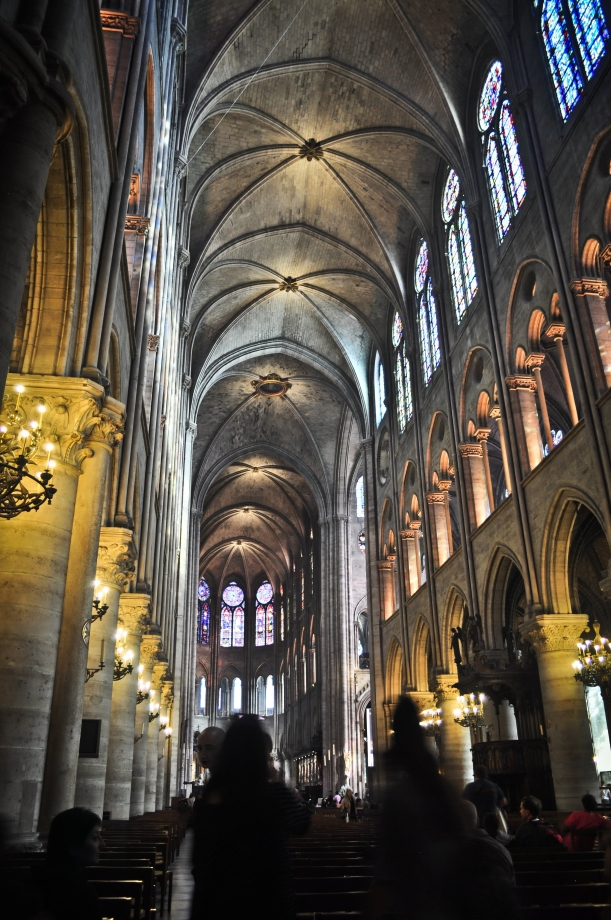
In keeping with the Gothic architectural style, the arches are pointed. Everywhere you look, you will see ornate details and exquisitely carved decorations. It is easy to see why Notre-Dame was an important center for religious and cultural events.
Notre–Dame’s Famous Gargoyles
The gargoyles of Notre-Dame Cathedral are almost as famous as the cathedral itself, thanks in part to Victor Hugo and his novel, The Hunchback of Notre-Dame. The uniquely carved stone figures, often depicting grotesque and mythical beasts, are perched on the edges of the roof.

The gargoyles are more than merely decorative features. They serve a functional purpose as waterspouts to direct rainwater away from the sides of the building. After the 2019 fire, many of the gargoyles were heavily damaged. There has been renewed interest in preserving and restoring the famous Notre-Dame gargoyles.
The Bells of Notre-Dame
Victor Hugo’s novel also drew attention to the bells of Notre-Dame Cathedral. Long before the fire of 2019, the original bells of Notre-Dame were lost. Nineteen of the original 20 bells, along with other artifacts from the church, were melted down to make cannons in 1681.
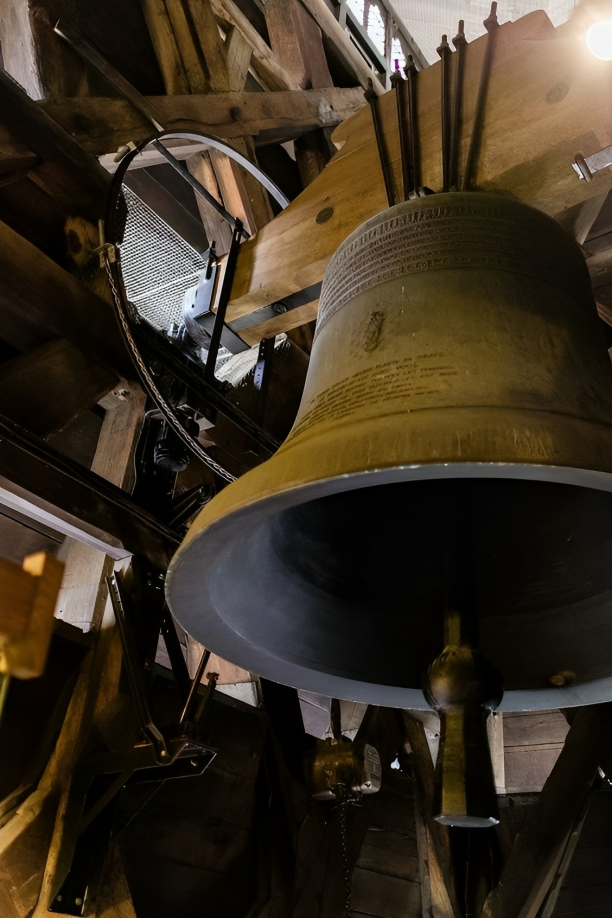
In the 1800s, a new set of bells was added to Notre-Dame, but over time, they fell out of tune. They were all replaced with yet another set of bells in 2013. The iconic bells of the cathedral, as we will see next, caused a special concern for firefighters battling the 2019 blaze.
Save the Belfry, Save the Cathedral
During the 2019 fire at Notre-Dame Cathedral, firefighters worried that the fast-moving flames on the roof would spread to the bell towers. If the wooden bell towers caught fire, the massive, weighty bells could crash through the roof and plunge through the cathedral.
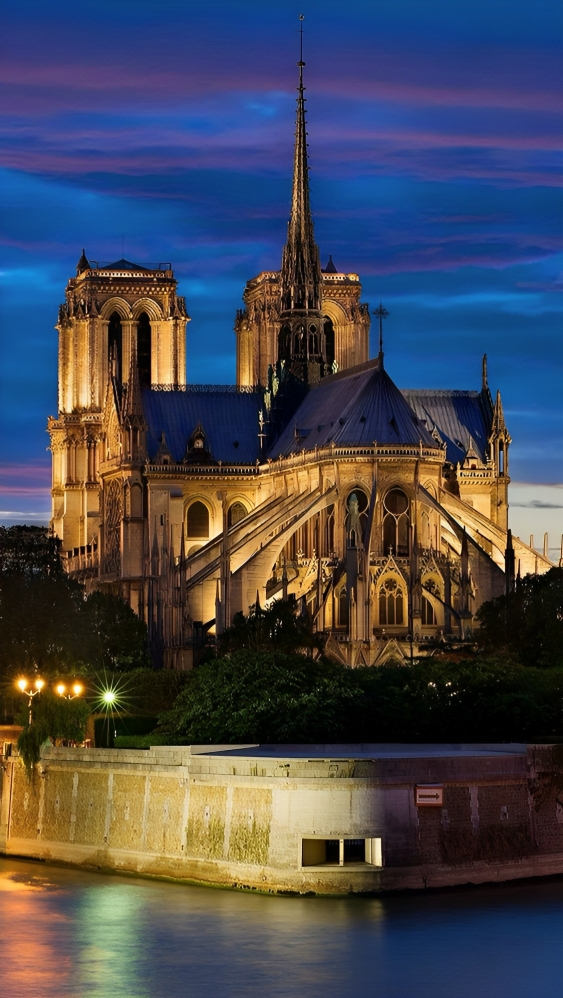
Like heavy wrecking balls, the bells could damage the stability of the entire cathedral. There was a real concern that if the bells fell through the building, the entire cathedral could collapse. The fire did reach the north bell tower, but the quick action of the firefighters extinguished it.
A Towering Spire
The towering spire of Notre Dame de Paris Cathedral, which stood 315 feet tall, served as a beacon of faith and beckoned worshipers to its doors. Before the fire, the spire stood tall above the surrounding buildings and could be easily spotted in the Paris skyline.
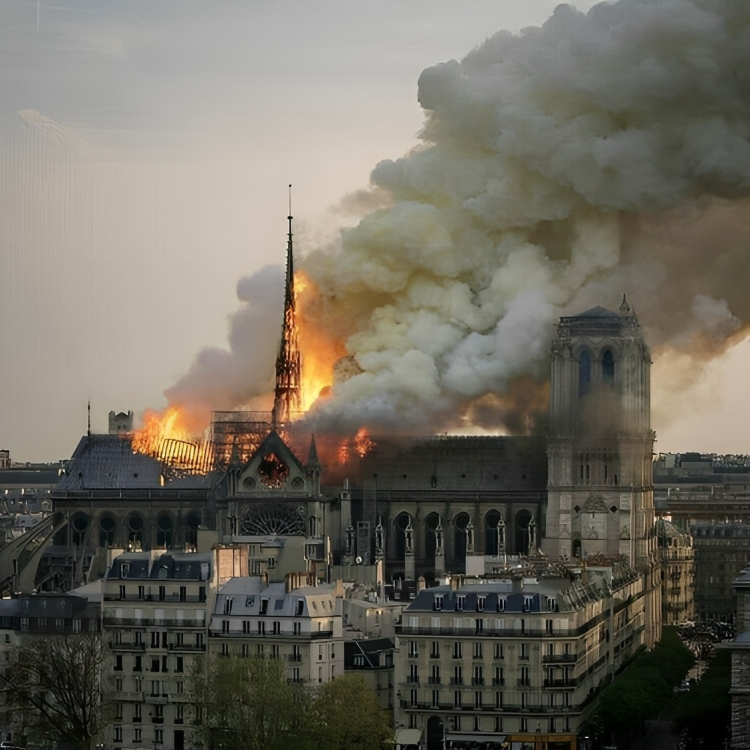
The spire was constructed using oak beams from the 13th century. Sadly, when the 2019 fire spread to the roof of Notre-Dame Cathedral, the dry timber of the spire ignited. Images of the spire tumbling to the ground in a pile of ashes was one of the most heartbreaking scenes from the fire.
Notre-Dame’s “Forest“
The roof of Notre-Dame Cathedral has long been nicknamed “The Forest.” When construction began on the building, workers sourced massive oak trees from surrounding forests. Only the tallest, sturdiest oaks were used. Approximately 1,300 oak trees were used. Each one of the support beams is the trunk of an individual tree.
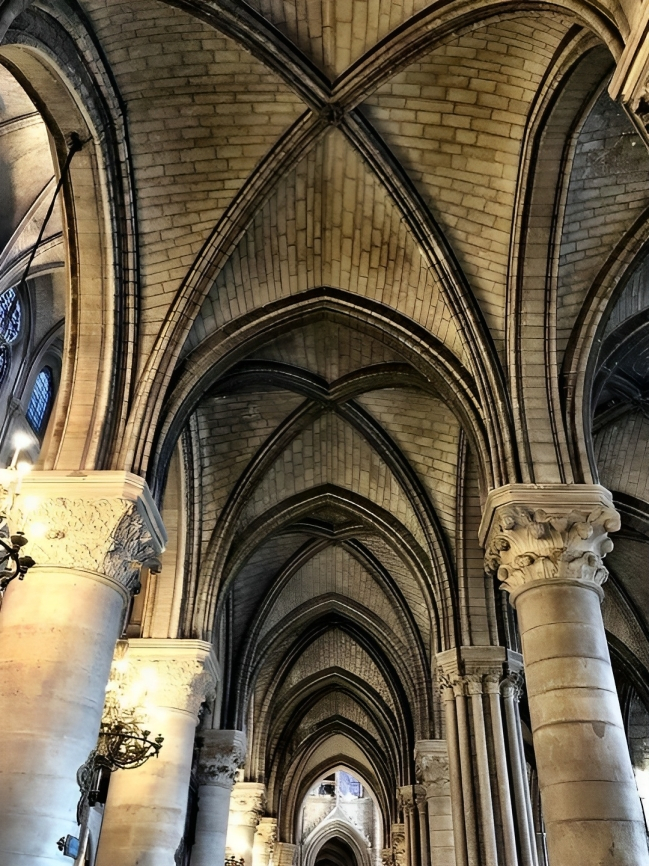
The trees that were harvested more than 850 years ago were probably at least 400 years old at the time. The timber creates a network of woodwork forming the roof of the cathedral. By 2019, the wood was so dry and well-seasoned that it quickly caught fire.
Good Timing Saved Some of the Roof Statues
Restoration work was being done on the cathedral when the 2019 fire broke out. Just days before the tragic event, sixteen of the historic statues were removed from the roof of Notre-Dame and stored in a warehouse outside of Paris.
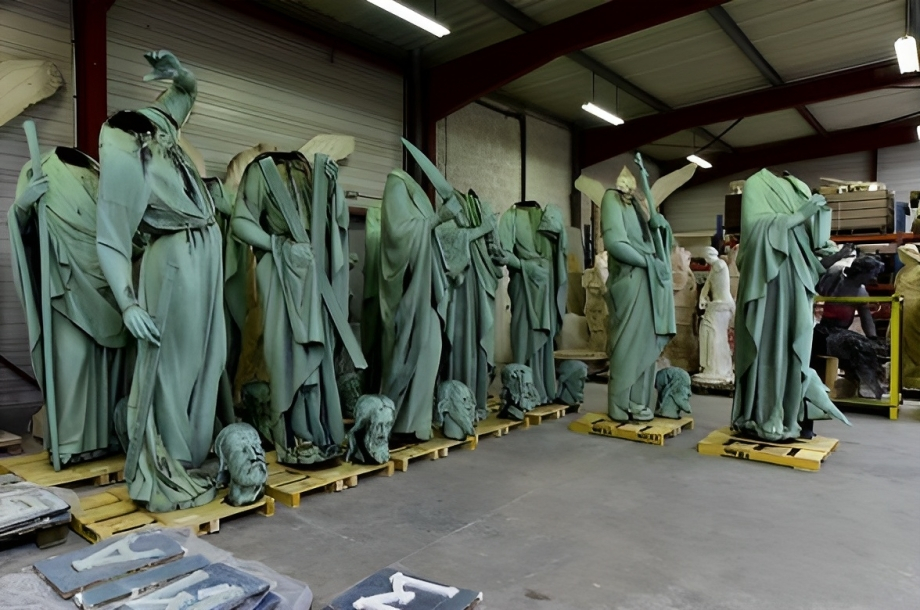
This stroke of good timing saved these statues from destruction. Among there were statues of the Twelve Apostles, as well as four evangelists from the New Testament. Many of the remaining statues on the roof, however, were destroyed or heavily damaged.
Safety in the Sacristy
Many of the priceless treasures and artifacts belonging to Notre-Dame de Paris escaped damage because they were stored in the cathedral’s sacristy. The church’s altar table was in the sacristy when the fire broke out. So were valuable gold and silver objects, medieval textiles, and other rare items.
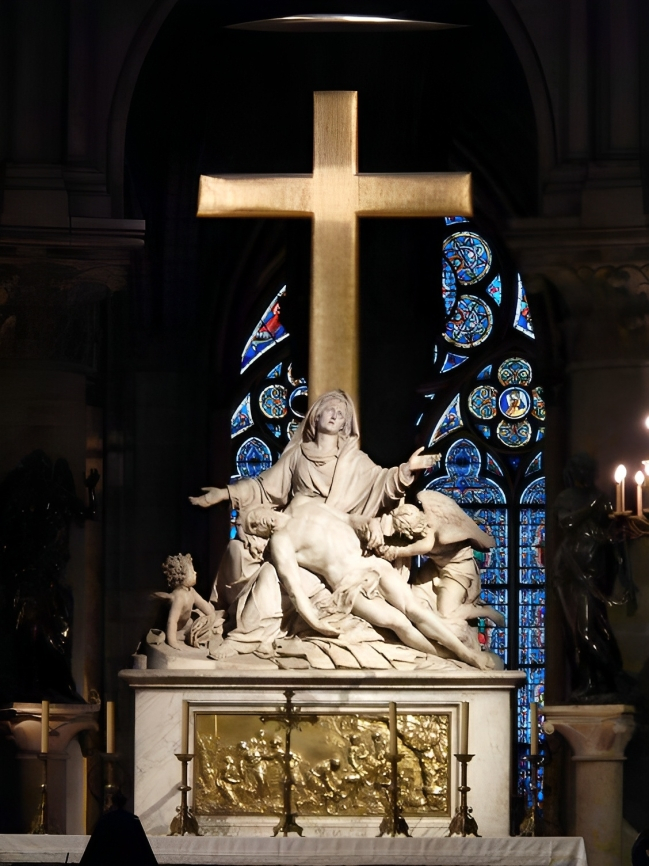
The sacristy is a separate building, located near the cathedral. It was constructed on the site of an older chapel, commissioned by King Childebert in the year 528. The priests used the building to prepare for upcoming services.
The Cathedral’s Famous Rose Windows
Stained-glass windows are another hallmark of Gothic architecture. Three of the stained-glass windows, the trio of rose windows, are the most famous. The north rose window is the most well-known, in part because it tells the story of the Virgin Mary.

The three rose-shaped windows at Notre-Dame are quite old. The west rose window was created in 1225, the north rose window dates to 1250, and the north rose window was made in 1260. The rose windows survived the fire of 2019.
The Fire’s Heat Had an Unexpected Consequence on the Stained-Glass Windows
Notre-Dame Cathedral boasts several other ornate, detailed stained-glass windows in addition to the three rose windows. Each one is known for its artistry and craftsmanship. The collection of windows is a priceless part of the cathedral.

All the windows were closely inspected after the 2019 fire. It was discovered that the lead joints in some of the stained-glass windows had softened and melted from the heat of the fire. Some of the windows had to be removed for restoration and repair.
A Challenge for Firefighters
The more than 400 firefighters responding to the 2019 fire at Notre-Dame Cathedral faced several unique challenges. Battling a blaze at a beloved, centuries-old, historic landmark constructed of wooden timbers is not a scenario they train for.

The responding firefighters were French. Notre-Dame was just as culturally important to them as it is to all the people of France. Their goal was to douse the flames while maintaining the structural integrity of the building and minimizing the damage to the iconic church.
Rethinking Traditional Firefighting Methods on the Fly
Very quickly, the fire chiefs overseeing the incident understood that traditional firefighting methods should not be used to put out the fire at Notre-Dame Cathedral. Water dropped from above, for example, may have irreparably damaged the wooden roof.
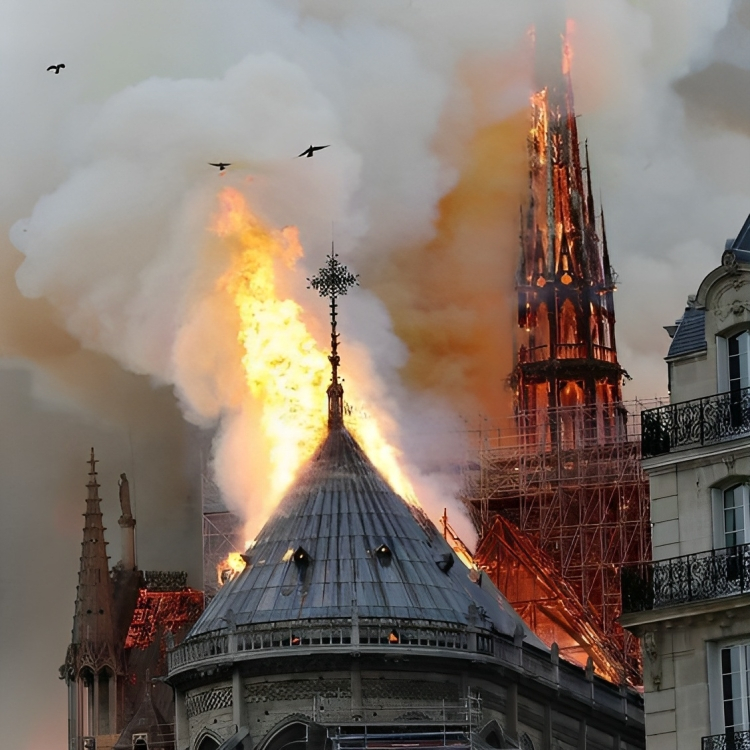
The firefighters opted to fight the flames from inside the structure. While this posed more of a risk to the firefighters, it would allow them to preserve as much of the building as possible. The crew did employ deluge guns on the exterior but dropped the water pressure down to reduce damage.
Rescuing the Priceless Artifacts
As the firefighters raced to contain the flames, more than 100 police officers, politicians, public servants, and government workers made it their mission to rescue as many of Notre-Dame’s priceless art and artifacts as they could.
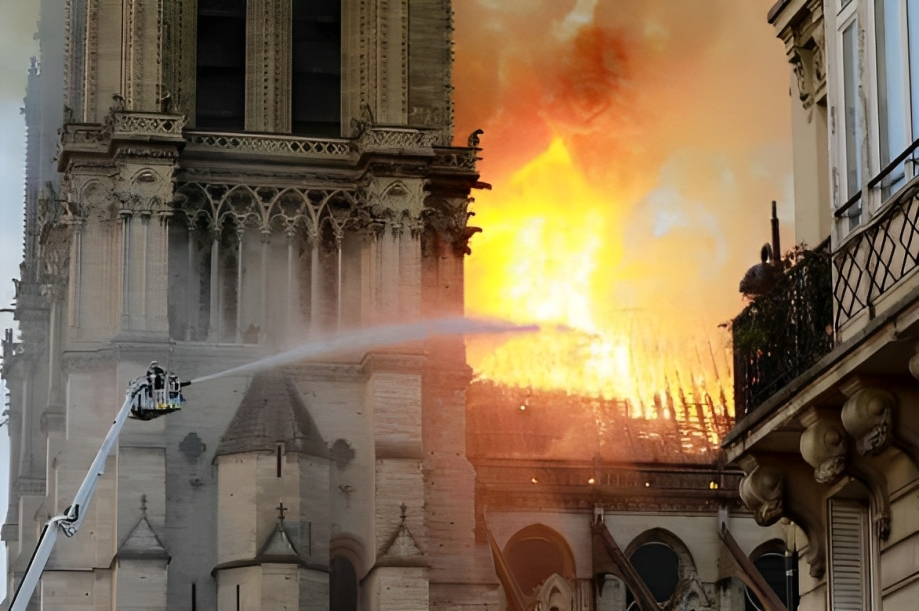
This group formed an old-fashioned bucket brigade, but instead of carrying buckets of water to the fire, they carried precious objects away from the flames. Their efforts paid off. After the smoke cleared, it was determined that only about five to ten percent of the cathedral’s treasures were lost.
No Loss of Life
The guards and employees at Notre-Dame Cathedral quickly evacuated all the visitors from the building when the alarms went off. That was no easy feat. The cathedral has a capacity of more than a thousand people at a time.

Three firefighters sustained minor injuries fighting the blaze, but no one was killed in the 2019 fire. Given the number of visitors at the popular tourist destination, the number of firefighters called to the scene, and the unconventional fire suppression methods used, it is a miracle that there was no loss of life.
A Special “Thank You” to the Firefighters
The 2019 fire at Notre-Dame Cathedral served as a reminder of the heroic deeds of firefighters. A few days after the flames were extinguished, the Archbishop of Paris, Michel Aupetit, hosted a special mass for the firefighters.
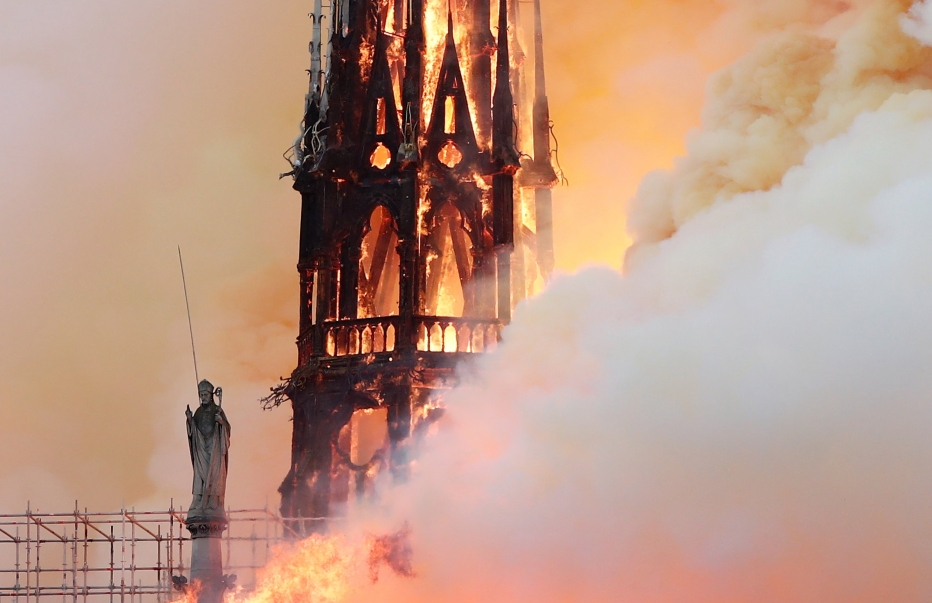
This Sunday Mass was held at Saint-Eustache Church and presided over by the archbishop. After the service, the archbishop presented the firefighters with a book of scriptures that had miraculously escaped the fire at Notre-Dame Cathedral.
The French President’s Appreciation and Vow
President Emmanuel Macron offered his own show of appreciation to the firefighters who put out the flames at Notre-Dame Cathedral. He invited them to a special gathering held at the Elysee, the official presidential palace. There, he shared his thanks to the firefighters for their brave work.

President Macron vowed to rebuild Notre-Dame Cathedral in time for the 2024 Summer Olympics, which will be held in Paris. That was a lofty promise. Although work is progressing on the reconstruction work, some experts believe it could take several decades to complete the work.
Assessing the Damage
Before the rebuilding process could begin, the cathedral needed to be assessed. A team of researchers, historians, architects, and scientists from Laboratoire de Recherche des Monuments Historiques in France suited up to examine the building.
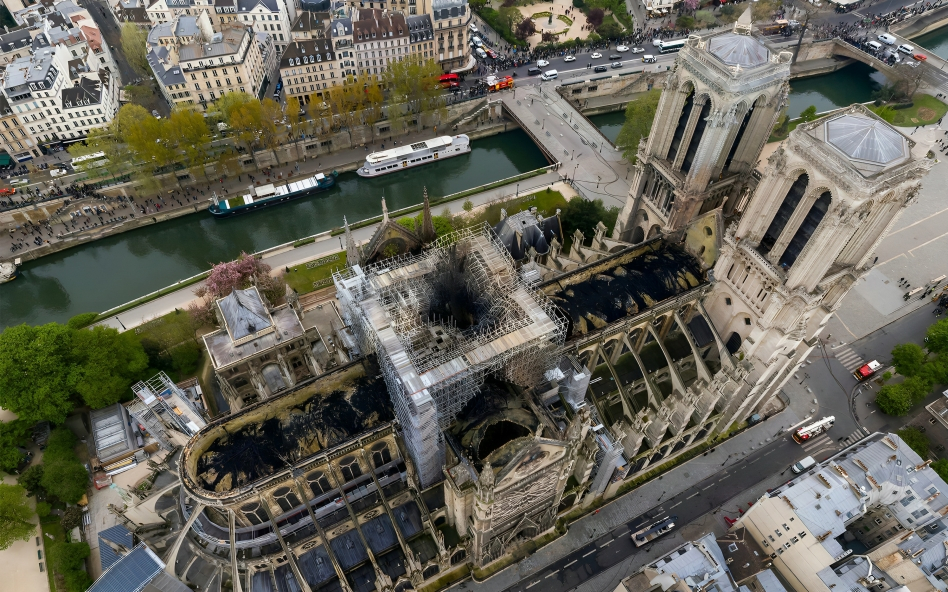
The team donned protective gear, including helmets and masks, and thoroughly inspected the ruins of the cathedral. Armed with their assessment, they were able to lay out a reconstruction plan that blends old elements with newly constructed ones.
Step One: Prevent Further Damage
Aline Magnien, the head of the assessment team from LRMH, explained that, after evaluating the condition of the ruins, it was determined that the first step would be preventing further damage to the iconic structure.

That meant closing the roof to protect the interior from the elements. This posed a problem. Climbing onto the damaged roof could cause it to collapse but not covering the roof could cause a collapse. It was a delicate situation.
A Clue in the Stones
The LRMH team used a clever scientific trick to determine the stability of the stonework in Notre-Dame Cathedral. They understood that the color of stones changes when exposed to high temperatures. Moreover, the shade of the color indicated how high the temperatures were.

For example, temperatures between 570-degrees and 750-degrees Fahrenheit are hot enough for iron fragments inside stone to break down, leaving red pigments. The darker the red, the higher the temperatures. At about 1500-degrees Fahrenheit, the stones crumble.
Water Damage from the Firefighters’ Hoses
After every structure fire, there will be damage caused by the water used to suppress the fire. In the case of Notre-Dame Cathedral, this was no different. The conscientious firefighters took care not to aim the water at the stained-glass windows, but they had to douse the wooden ceiling.

In addition, the limestone walls took the brunt of the water. Limestone is a porous material that soaks up the water like a sponge. Water-logged limestone is quite heavy, increasing the risk of collapse. It took well over 18 months for the limestone to dry out.
Notre-Dame’s Dirty Little Secret … Lead
Lead was commonly used in building construction in medieval times, long before the hazards of lead were widely known. A great deal of lead, in fact, was used to build the roof of Notre-Dame Cathedral. Residents of Paris were concerned about lead contamination from the fire.
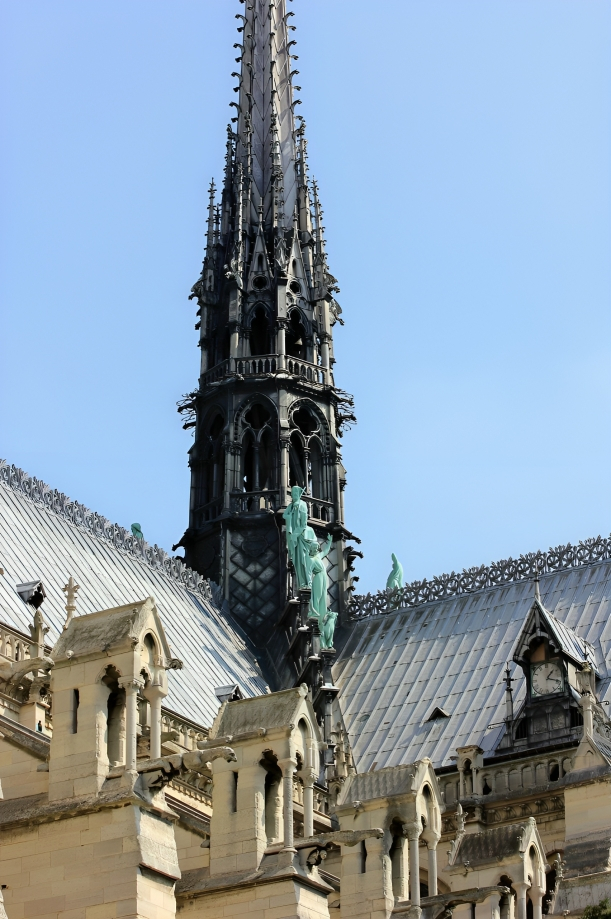
The LRMH established a special team of researchers to determine if lead contamination posed a threat to the public. They reported that the fire had not reached the required temperature to convert lead into an airborne gas. They claimed that most of the lead had melted into a mass and remained in the building.
Does Evidence Suggest Otherwise?
Not everyone in Paris agreed with the findings of the LRMH team. They pointed to photographs and video footage taken during the fire. These show a distinctive yellow-ish haze above the cathedral … an indicator of lead in the air.
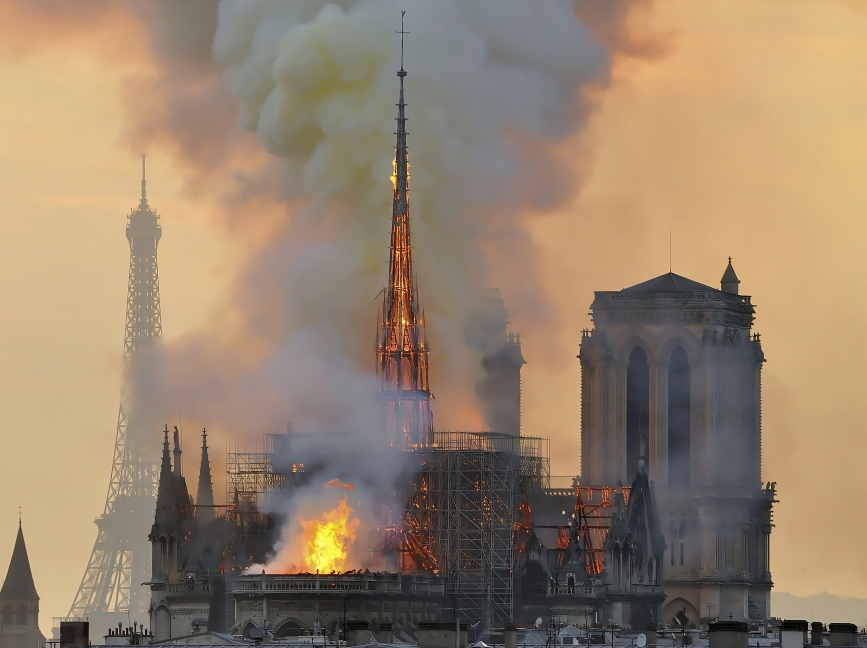
Additionally, several experts refuted the team’s assertion that the fire was not hot enough to release lead into the air. They point to other areas of damage to show the fire was much hotter than the researchers claim.
A Lead-Based Cover Up?
Despite clamors from the public, the official stance was that the 2019 fire at Notre-Dame Cathedral did not release lead into the surrounding environment. Still, people living in the neighborhoods surrounding the cathedral grew increasingly worried about lead poisoning.
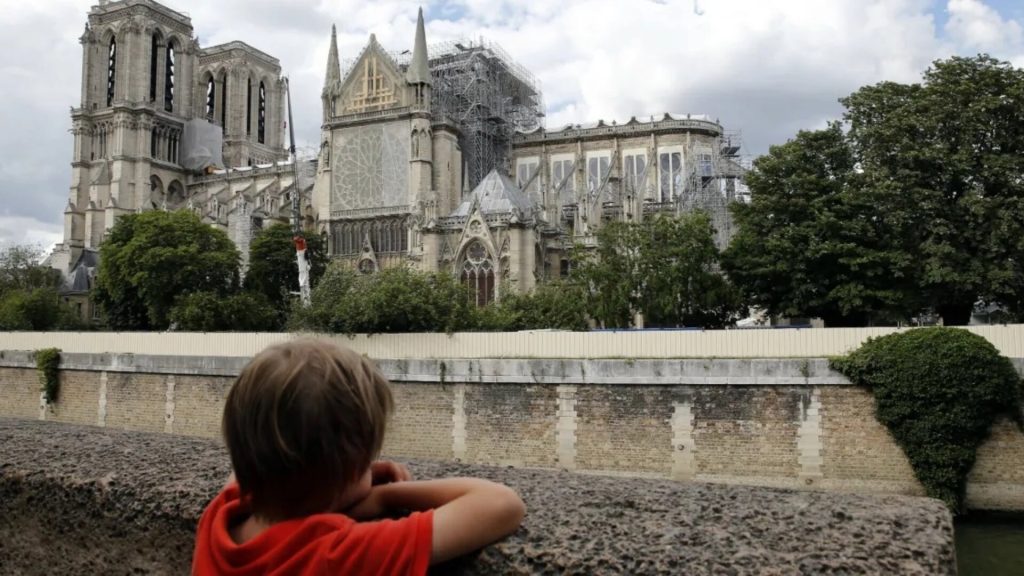
For weeks, the residents of the city pushed for the Parisian authorities to investigate the lead issue. When reassuring them didn’t stop the concerns, the authorities finally agreed to conduct lead testing. What they found was shocking.
“Significant Levels of Lead“
More than a month after the 2019 fire, French authorities finally conducted lead testing in the areas around Notre-Dame Cathedral. They tested public buildings, such as schools, libraries, churches, parks, and police stations. They found significant levels of lead.
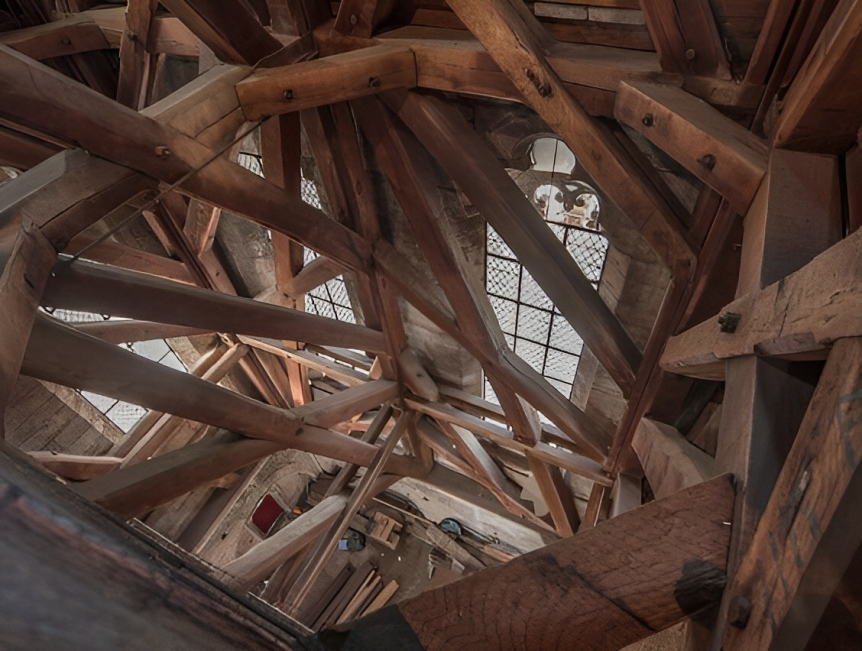
In many of the places that were tested, the amounts of lead were up to 70 times higher than the recommended limits. Levels of lead this high pose a significant health hazard. Exposure to lead can cause neurological, physical, cognitive, and behavioral problems. It can even be fatal.
Downplaying the Risk
After lead was detected in such high amounts, the public was outraged. This was followed up by an article in the New York Times stating that the French authorities were aware of the high levels of lead but chose not to act on this potentially deadly information.
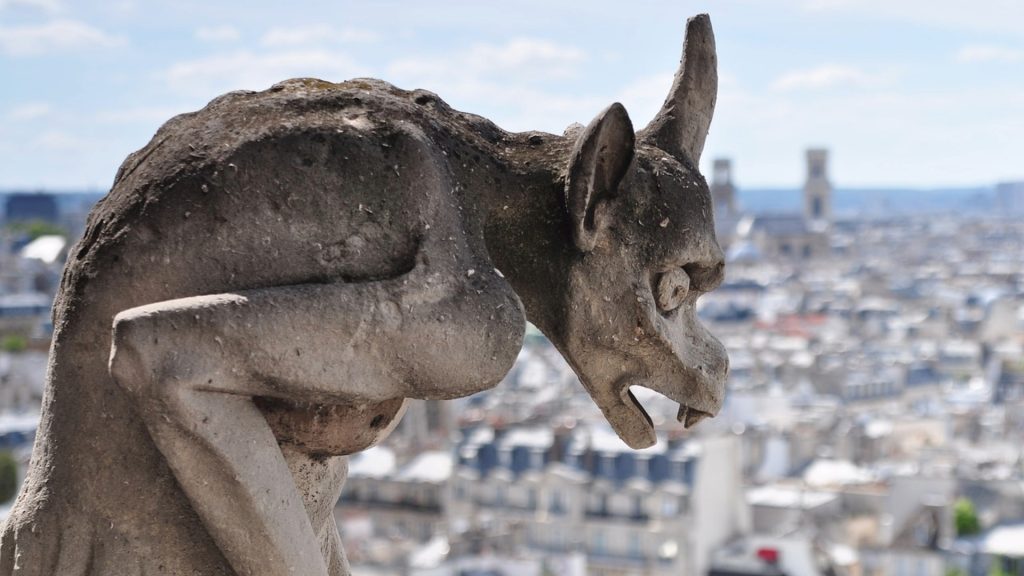
While many people called it a cover up, an independent environmental group conducted their own research. They discovered that lead levels exceeded 20 times the recommended limits in locations a mile away from Notre-Dame.
Reducing Exposure to Lead
The group’s findings showed that the yellow haze witnesses saw during the 2019 fire at Notre-Dame Cathedral was, in fact, gaseous lead mixing with the air. The gas was carried on the wind, creating a bigger problem than initially thought.
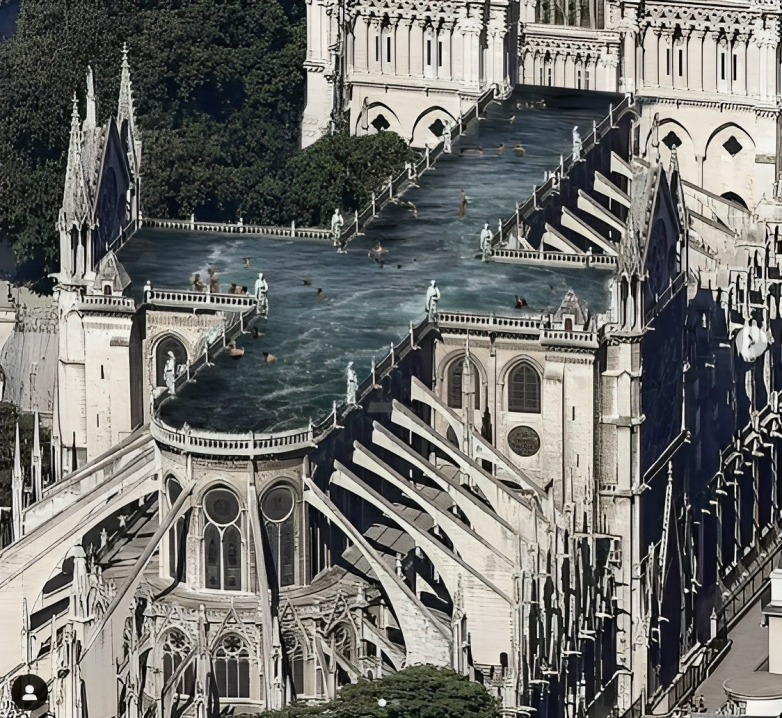
The report also prompted authorities to do more thorough testing inside Notre-Dame Cathedral as well. They found extremely high levels of lead throughout the structure. It required special precautions to reduce the exposure to lead for workers at the site.
Protection and Decontamination
All workers doing the restoration and repairs at Notre-Dame Cathedral are now required to take extra precautions. They are to wear protective clothing on the job. These disposable garments, similar to ones worn in the medical field, must be disposed of in a dedicated trash can.
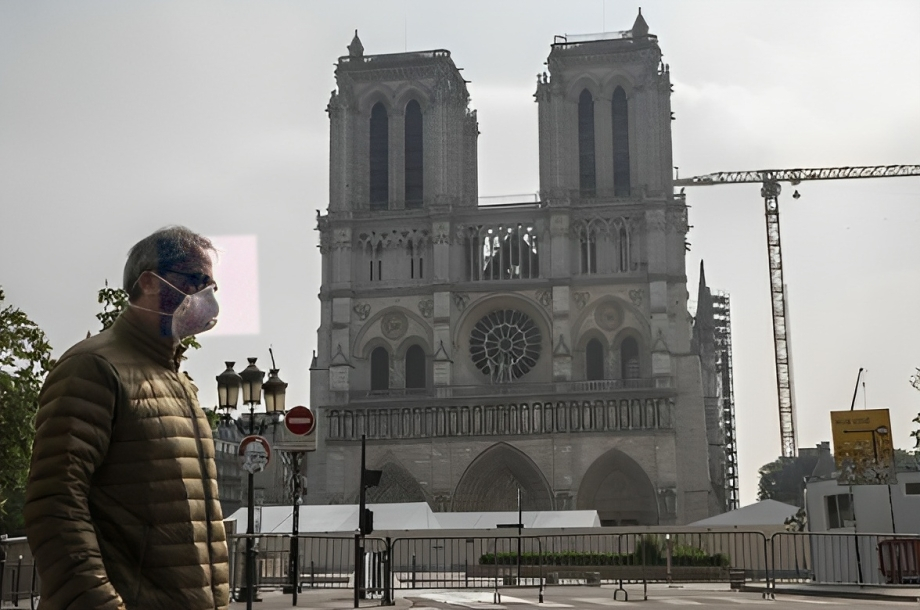
Workers are only allowed to stay inside the cathedral for two-and-a-half-hour shifts before they must leave. Upon exiting, they are required to go through a lengthy and thorough decontamination process.
The World Mourned the Heartbreaking Loss
Even before the ashes cooled, leaders from around the world expressed their heartbreak over the devastating fire. England’s Queen Elizabeth praised the brave firefighters who put their lives in danger to save the beloved cathedral. Her son, Charles, now the King of England, referred to Notre-Dame Cathedral as “a treasure for all mankind.”

Moon Jae, the president of South Korea, described the tragedy as “a loss for people all over the world.” French businessman, Bernald Arnault, immediately donated $200 million to the restoration efforts.
Committed to Fully Restoring the National Treasure
France is fully committed to restoring its beloved national treasure and returning Notre-Dame Cathedral to its former glory, albeit a lead-free glory. It will be a long process to match the intricate work of the original craftsmen, but the end result will be worth the wait.
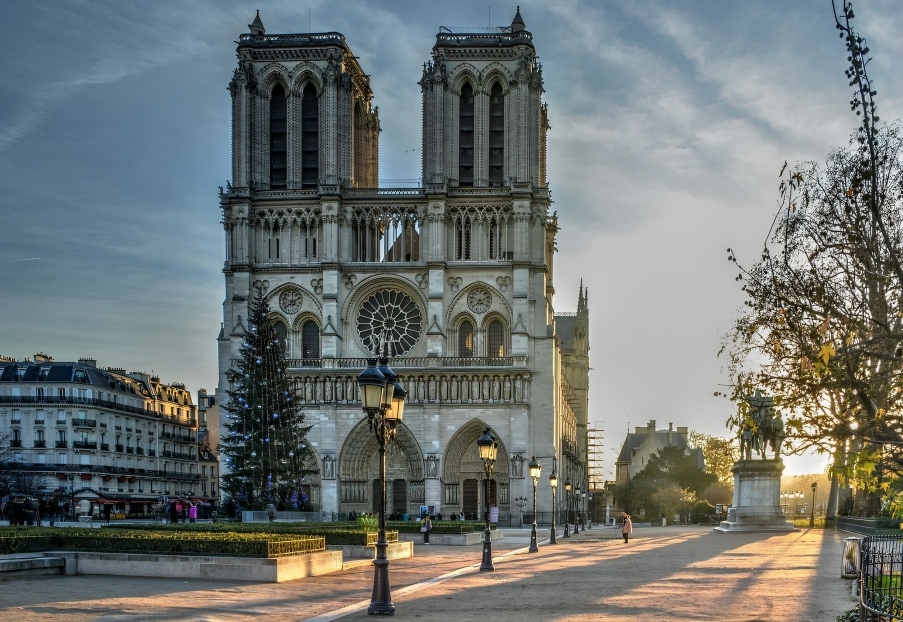
Prior to the fire, Notre-Dame de Paris welcomed about 12 million visitors annually. It was one of the most popular tourist attractions in Paris. In time, it will be again

